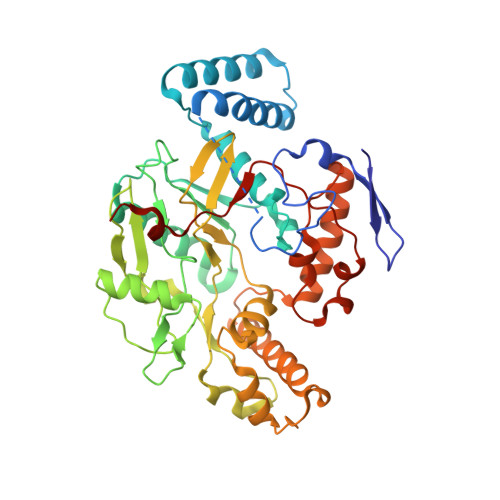Simplified 2-Aminoquinoline-Based Scaffold for Potent and Selective Neuronal Nitric Oxide Synthase Inhibition.
Cinelli, M.A., Li, H., Chreifi, G., Martasek, P., Roman, L.J., Poulos, T.L., Silverman, R.B.(2014) J Med Chem 57: 1513
- PubMed: 24472039
- DOI: https://doi.org/10.1021/jm401838x
- Primary Citation of Related Structures:
4CAM, 4CAN, 4CAO, 4CAP, 4CAQ, 4CAR, 4CDT, 4CFT - PubMed Abstract:
Since high levels of nitric oxide (NO) are implicated in neurodegenerative disorders, inhibition of the neuronal isoform of nitric oxide synthase (nNOS) and reduction of NO levels are therapeutically desirable. Nonetheless, many nNOS inhibitors mimic l-arginine and are poorly bioavailable. 2-Aminoquinoline-based scaffolds were designed with the hope that they could (a) mimic aminopyridines as potent, isoform-selective arginine isosteres and (b) possess chemical properties more conducive to oral bioavailability and CNS penetration. A series of these compounds was synthesized and assayed against purified nNOS enzymes, endothelial NOS (eNOS), and inducible NOS (iNOS). Several compounds built on a 7-substituted 2-aminoquinoline core are potent and isoform-selective; X-ray crystallography indicates that aminoquinolines exert inhibitory effects by mimicking substrate interactions with the conserved active site glutamate residue. The most potent and selective compounds, 7 and 15, were tested in a Caco-2 assay and showed good permeability and low efflux, suggesting high potential for oral bioavailability.
Organizational Affiliation:
Departments of Chemistry and Molecular Biosciences, Chemistry of Life Processes Institute, Center for Molecular Innovation and Drug Discovery, Northwestern University , 2145 Sheridan Road, Evanston, Illinois 60208-3113, United States.



















